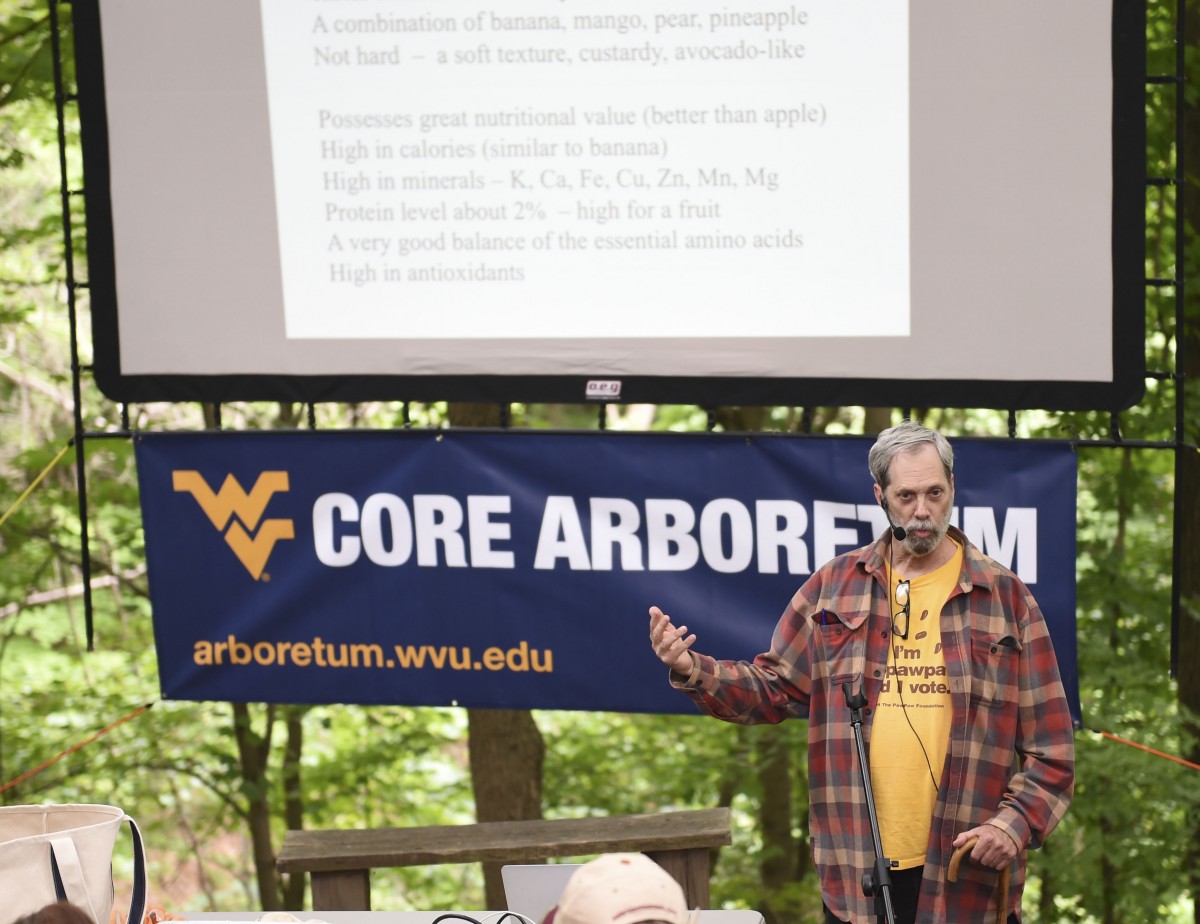The pawpaw fruit. Green, pear-shaped, backed by a natural history of tens of millions of years and the largest native fruit in West Virginia.
Some folks find it to have a smooth, tropical taste reminiscent of banana, mango or pineapple, but attendees of Saturday’s seventh annual West Virginia Pawpaw Festival at WVU Core Arboretum can decide for themselves after sampling Appalachian varieties of the unique crop and learning from pawpaw experts.
Upon beginning his time as director of WVU Core Arboretum, Zach Fowler noticed just how many pawpaw trees dot the arboretum’s grounds. Although Fowler was familiar with the fruit, he knew many West Virginians have not had the opportunity to experience this fall fruit with such rich roots in Appalachian history and culture.
Thus, the idea for Pawpaw Parties was sown.
Originally, the annual Pawpaw Party was held for the community to learn about pawpaws and sample wild pawpaws from the WVU Core Arboretum’s very own wild pawpaw trees. These gatherings have a fairly spontaneous schedule, however, due to the unpredictable and short-lived ripening of pawpaws.
Fowler had a vision for a grander, consistent celebration to complement the well-attended Pawpaw Parties: the WV Pawpaw Festival.
Held on the WVU Core Arboretum’s lawn area, the festival will feature live music from local musicians, including the WVU Bluegrass Band and Mon Hills Records artists Dylan Hinzman, Buffalo Run and Jennifer Cooper. Food vendors include Stray Cat Chimmi Shack, T&L Hot Dog Cart and Hill & Hollow.
Pawpaw trees and other native plants will be available for purchase, with the North American Pawpaw Growers Association on hand to answer cultivation questions. Pawpaw expert and author of “Pawpaw: In Search of America’s Forgotten Fruit” Andrew Moore will give a talk and sell copies of his book at 3 p.m. and, you guessed it, there will be a range of ways to sample and purchase pawpaws during the festival.
Orchard-grown Peterson Pawpaw varieties — named for WVU alum and pawpaw expert Neal Peterson — will be available, and Peterson himself will join the festivities to share his expertise.
Pawpaw dishes crafted by Hill & Hollow’s Chef Marion Ohlinger will also be available for public sampling. Pawpaws are often enjoyed raw or used in recipes like jam, pie, bread, pudding, ice cream and more, and the festival offers a snapshot of the fruit’s many possibilities
The WV Pawpaw Festival is a unique and fleeting opportunity to try the seasonal fruit. Pawpaws briefly ripen in early fall and keep for a short shelf life, and thus can be difficult to track down. This year’s pawpaw season was even more unconventional, made early and short-lived by Morgantown’s hot, dry summer.
“Pawpaws are something that’s not commercialized at this point, you can’t go to the supermarket to buy them. You can’t even go to most farmer’s markets [to buy them],” said Fowler. “It’s kind of a rare thing to be able to have the opportunity to buy and taste the fruit.”
By encouraging locals and out-of-towners alike to come together to celebrate, learn about and enjoy the fall fruit before it’s gone, the festival aligns well with the arboretum’s emphasis on connecting the Morgantown community with the natural wonders of West Virginia.
“We feel like the more people connect with wonderful, amazing things like [pawpaws], just on the landscape around them that they’ve grown up surrounded by, that’s an amazing discovering that makes it more likely that you’ll look around for other things, and pay closer to nature and connect with nature in a way that you might not have otherwise,” said Fowler.
The WV Pawpaw Festival is free and open to the public, no registration is required. Visitors can stop by anytime between noon and 5 p.m. The WVU Core Arboretum’s parking lot will be reserved for food trucks, but visitors can find free weekend parking at the WVU Coliseum.
Visit arboretum.wvu.edu/wv-pawpaw-festival for more information.




